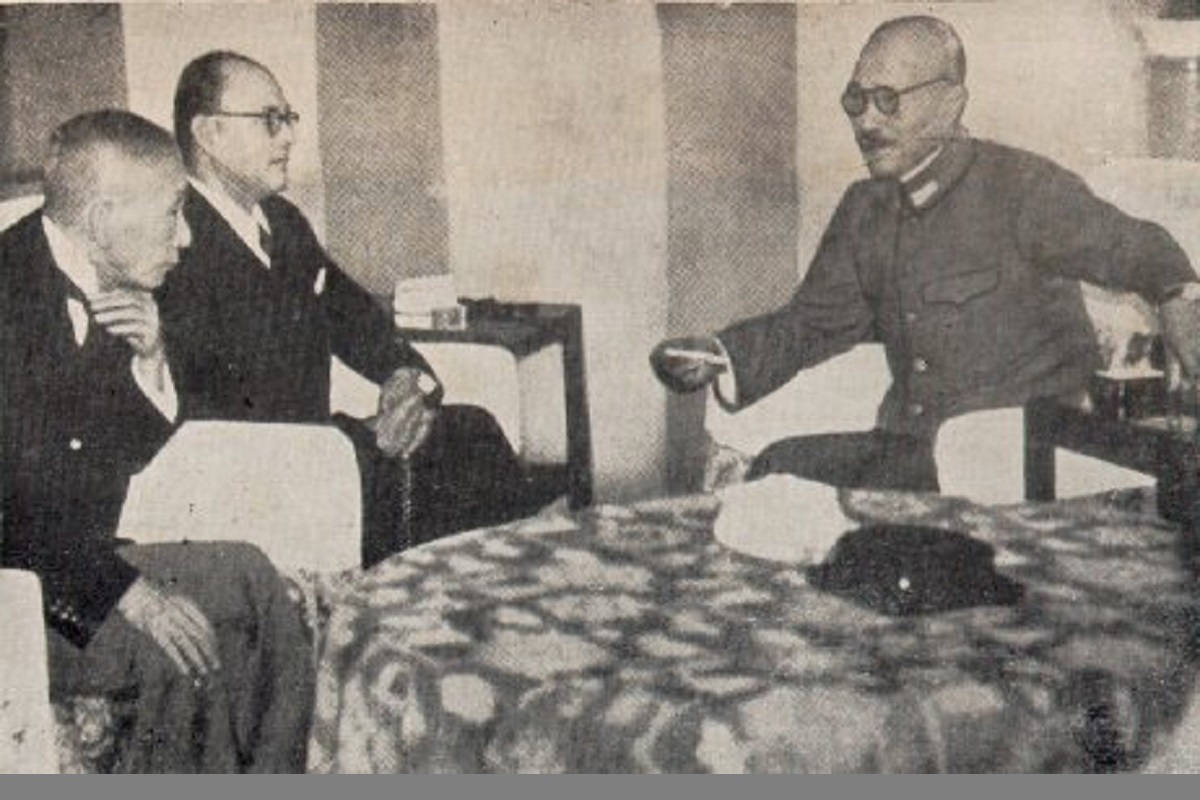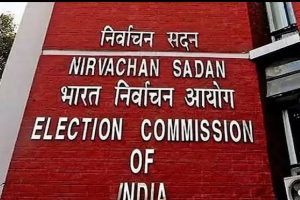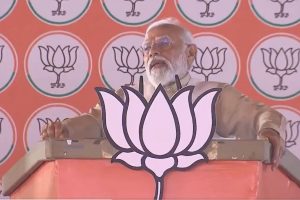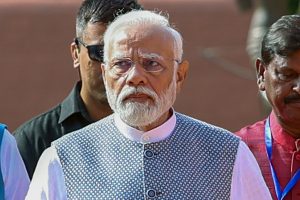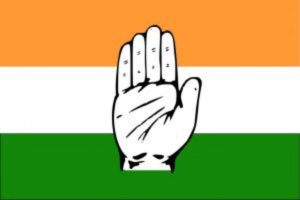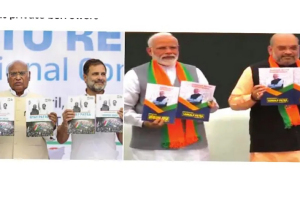Rash Behari Bose is a sparkling emerald in the diadem of freedom fighters. Born in Chandannagar in May 1886, at the age of 15 he read Debi Prasanna Roy Chowdhury’s book, Sarat Chandra, containing an elaborate description of the Revolt of 1857. Deeply moved, he developed a strong feeling against the British.
He read several other books on the revolutionary movement with feverish zeal and became so influenced by the narratives that he could not suppress his desire to liberate his motherland. His father, a clerk of the Government of Bengal, he was transferred to the secretariat of the Government newspaper in Shimla. Rash Behari as a child moved to the Chandannagar house of his father and was brought up by his maternal uncle and mother.
After some yeas his father got him a job with a unit printing government publications. The job mainly involved typing handwritten manuscripts. Through this work experience he developed a command over English and it helped him gain a strong foothold in the activities of the independence movement. Soon thereafter, he joined as a clerk at the Central Research Institute in Kasauli, near Shimla.
In 1906, at the age of 20, he became an assistant in the chemical laboratory of the Forest Research Institute at Dehradun. While working for the British Raj, he became deeply engaged in the freedom movement. Within a few years he distinguished himself as a leading activist. In early 1911, Rash Behari went to Chandannagar to nurse his ailing mother, who passed away soon after. At this time, he visited the ashram of Motilal Roy, a renowned devotee of Sri Aurobindo and was imbued with his religious philosophy.
After a few months Motilal Roy, Suresh Chandra Ghosh, another radical, and he worked out a dangerous plot to kill Viceroy Hardinge by using a bomb. Unlike other activists, Bose had acquired the skill to manifacture bombs and since he handled chemicals in large quantities in the Forest Research Institute, he secretly acquired the necessary materials. He taught young activists the technique to make and handle bombs and preserved the bombs at the radical hideouts in different parts of the country.
He also developed a route for secretly acquiring revolvers from the Gurkhas. It had been planned that Viceroy Hardinge would be the central figure in the Viceregal procession in Delhi organised to commemorate the transfer of capital from Calcutta to Delhi. Just as the elephant carrying the Viceroy passed along the Chandni Chawk area, Bose’s assistant, duly trained by him, hurled the bomb at Hardinge.
There was a deafening sound. Several attendants of the Viceroy died on the spot and Hardinge was grievously injured. Bose along with his companion fled. Bose returned to Dehradun as if nothing had happened and continued his work in the Institute. In early 1913 the injured Hardinge came to Dehradun for treatment. The intrepid Bose organised a dinner and reception in honour of the Viceroy and gave a lecture denouncing the dastardly attack on the Viceroy who thanked him profusely.
But a shocking surprise was in store for him when he subsequently learnt that the person who organised the reception was the kingpin of the operation to kill him. In 1914 Bose established contact with the radical leaders in Lahore and attempted to carry out the rebellion by the Indian soldiers. But this attempt was foiled as the British could detect their plan in advance and in the gun-battle that followed as many as 50 Indian soldiers died and the rest were arrested. The police were about to close in on Bose.
As in the previous cases, he disguised himself as a turbaned Sikh and hiding a loaded gun in his pocket, escaped from Lahore. In fact, Rash Behari Bose had nerves of steel and a wonderful ability to disguise himself with unerring precision. The British detectives could not trace him despite frantic attempts. A powerful leader of the Gadar Party, who lived in America, returned to India secretly and planned army action in Meerut with the concurrence and connivance of Bose.
This attempt also failed, the Gadar Party leader was arrested, tortured and sentenced to death. Bose’s companion in the Viceroy case was also arrested and put to death. The British authorities prepared posters with the photograph of Bose and launched a massive search for him across the country. His photograph and details about him were inserted in newspapers and a large reward was placed on his head.
The friends of Rash Behari strongly urged him to leave the country. Thus after adequate funds had been collected, a heartbroken Rash Behari left India. He boarded a Japanese ship in May 1915 and left for Japan using the name of Priya Nath Tagore, a relative of Rabindranath Tagore who lived in a palatial house in Dehradun. He adroitly evaded the police and reached Tokyo on 8 June. He, with the help of a policeman who knew English, arranged accommodation in a rented house and started establishing contact with the Indians and got involved in the operation of sending pistols and revolvers from Shanghai and Tokyo to the Indian revolutionaries.
During investigation, the British police stumbled upon a sensational fact. PN Tagore, they came to know, was the false name used by none other than Rash Behari Bose, the dangerous and dreaded revolutionary. The Japanese government, on a request from the British under the Anglo-Japanese Alliance, served a deportation order to Bose. His well-wishers arranged for his shelter in Nakamuraya in Shinjuku, a famous shop and bakery, in defiance of deportation orders.
In this manner, Rash Behari Bose changed from PN Tagore to become Bose of Nakamuraya. He and another radical friend lived in the studio behind the shop, vacated by a reputed artist. They could not leave the studio and remained holed up the whole day inside in what looked like a hole dug in the ground. They could not slip out of the dark studio, nor could they get a view of the world outside. Fortunately there was a kitchen in the studio and they could cook.
They asked the maids to buy the foodstuff and spices and cooked Indian curry for themselves. Interestingly RB Bose was instrumental in introducing an authentic Indian curry, his unique contribution to the enrichment of gastronomic diversity. His companion, unable to bear the hardship of claustrophobic existence, left for a safe shelter after two months. RB Bose bore this hazard with composure and stoic indifference.
He used a bilingual conversation exercise book. Kokko, the owner of the shop, also helped him. While life continued in this way, the Tenyamaru incident occured further afield. A British naval ship had fired at the Japanese ship, Tenyamaru. Seven Indians on board were captured and taken to Singapore.
The Japanese foreign ministry made a strong official protest to England and withdrew the deportation order against Bose and his companion. Bose was thus a free man. He left Nakamuraya for a house after nearly three and a half months in the confines of the studio. But the British authorities were still after him.
The British Embassy engaged a private detective agency to find out where Bose was hiding to take him into custody. Under these circumstances, as gleaned from available records, he changed his residence as many as 17 times in a desperate game of hide-and-seek.
(To be concluded)
(The writer is a retired IAS officer)

